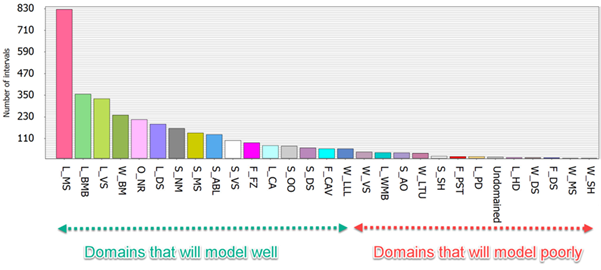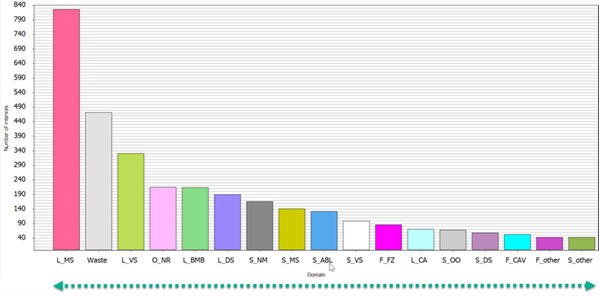Data Preparation
Understanding and preparing the data is a vital step to generate a geological model that suits the geology and the intended purpose of the model. The Domain manager and Charting tools are key steps in preparing the data and the following guide outlines the key areas of data preparation.
| Domain distribution | Model resolution | Sample density | Grade |
|---|---|---|---|
| >1% data per domain |
XY - 1/4 drillhole spacing |
4 samples/block (Z) | Remove negative grades |
Domain distribution
Domains that account for less than 1% of the total samples will be poorly represented in your model. Consider combining minor domains, modelling only important domains or densifying samples where important domains are poorly represented in your drilling.

Note: Recommended solution is to group similar domains together as shown in the image below.

Model resolution
Block size is an important consideration when modelling domains. Too large a resolution will model thin units poorly.

Note: Recommended sizes are a block size of ¼ drillhole spacing in XY and ½ of the vertical resolution required in the final model.

Sample density
Thin units with few samples are easily swamped by thick units with many samples. Densifying samples to ¼ the block height ensures that thin units are modelled accurately.

Note: Consider the drilled thickness against vertical thickness when calculating sample density and block height.
Grade
Negative and non-real data should be removed prior to grade trend modelling. Values from domain specific statistics can be used to replace negative and non-real data values in these cases.
